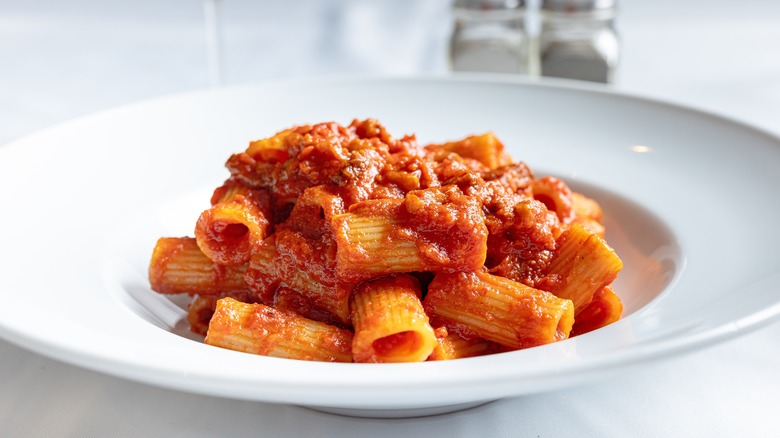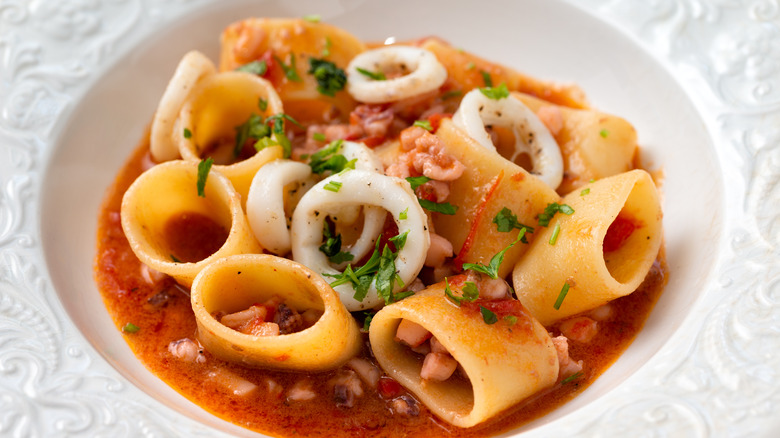The Biggest Difference Between Paccheri And Rigatoni Pasta
There are over 350 types of pasta in the world so chances are, once you separate the strings from the tubes, all these shapes may start to look much the same. After all, the differences between spaghetti, linguine, and tagliatelle are hardly discernible to the inexperienced eye, nor are the nuances that make paccheri different from rigatoni.
There's a lot that paccheri and rigatoni have in common besides their Italian origin. For one, they're both tube-shaped pasta with hollow centers. Both paccheri and rigatoni tend to have ridges on their surface, which helps give eaters a burst of saucy deliciousness in each bite. Additionally, they're both sturdy enough to stand up to rich and hearty sauces without turning into mush under their weight. To those not familiar with the subtle difference between the two, paccheri and rigatoni could very well look interchangeable.
The biggest difference between paccheri and rigatoni, however, is their size. Not only is paccheri smaller and more bite-sized in length, but it also has a broader hollowed center with a diameter that's noticeably larger than rigatoni. There is a logic to paccheri's width, and it has to do with the pasta's historical use in Italy.
Paccheri's history makes its uses different from rigatoni
Legend says that the paccheri was invented in Italy for a reason. The partisans of modern-day Austria and Hungary had a fondness for the garlic grown in Southern Italy in the early 1600s, as it was thought to be larger and more pungent than its Austrian counterpart. To protect its own farmers from the stiff competition, Austria subsequently banned the import of Italian garlic. Not the kind to be deterred, crafty Italians began to find ways to smuggle garlic into the country. Et voila! The paccheri was born.
Italians created a pasta that would accommodate about four cloves of garlic inside each of its hollowed centers, earning them approximately one ducat per paccheri. Considering its historical use, it's no surprise that paccheri continues to be used in dishes where it's stuffed with fillings.
Where rigatoni is simply boiled as-is and then tossed into a sauce, paccheri is stuffed with a mixture of ingredients including seafood, mushrooms, and garlic with sausages before being mixed into a sauce. Some even pipe ricotta into paccheri, layer it with sauce and cheese, and bake it like a lasagna. So while size is the most tell-tale sign that differentiates paccheri from rigatoni, the two shapes also have different uses. Rigatoni's smaller diameter means that it can barely accommodate any filling, whereas paccheri can hold about four garlic cloves worth of it!

